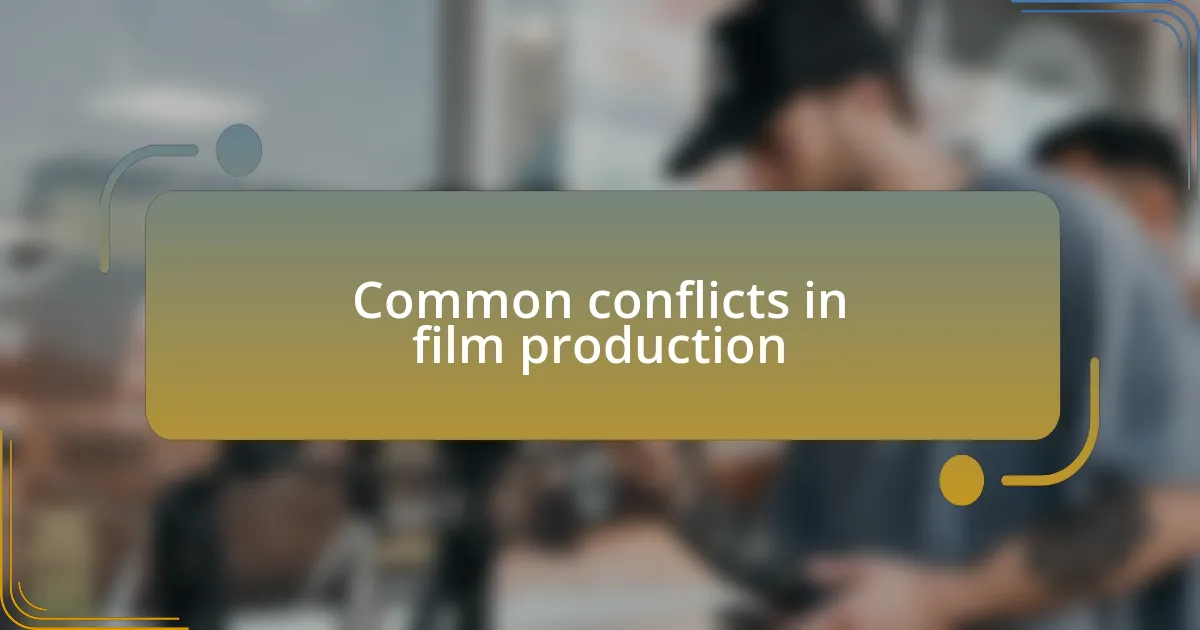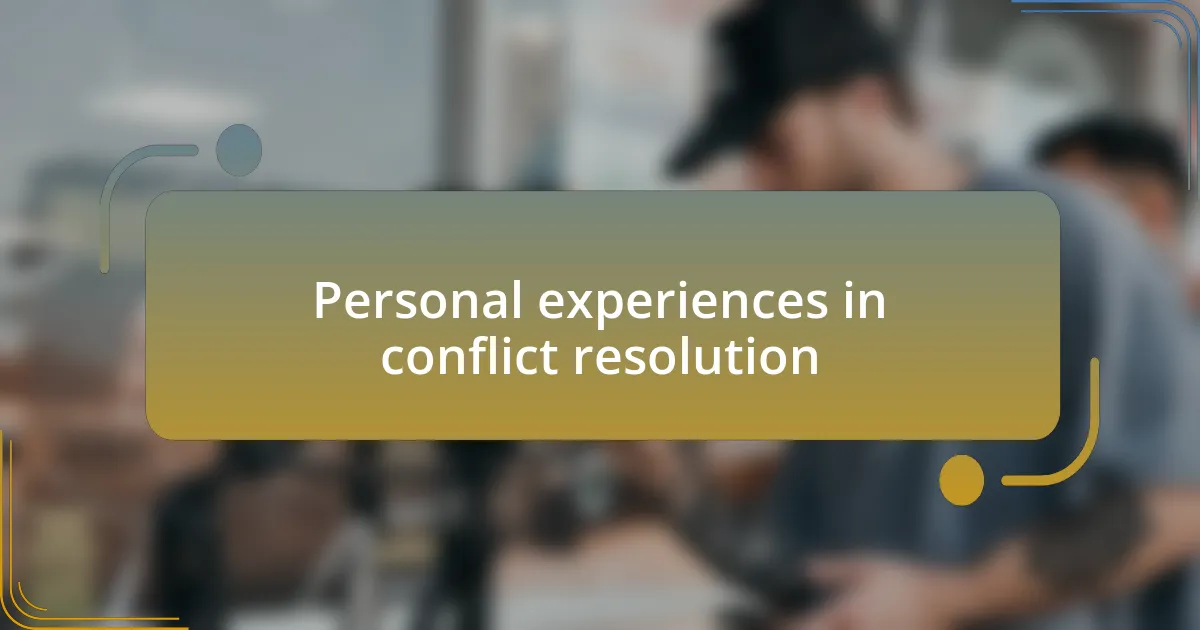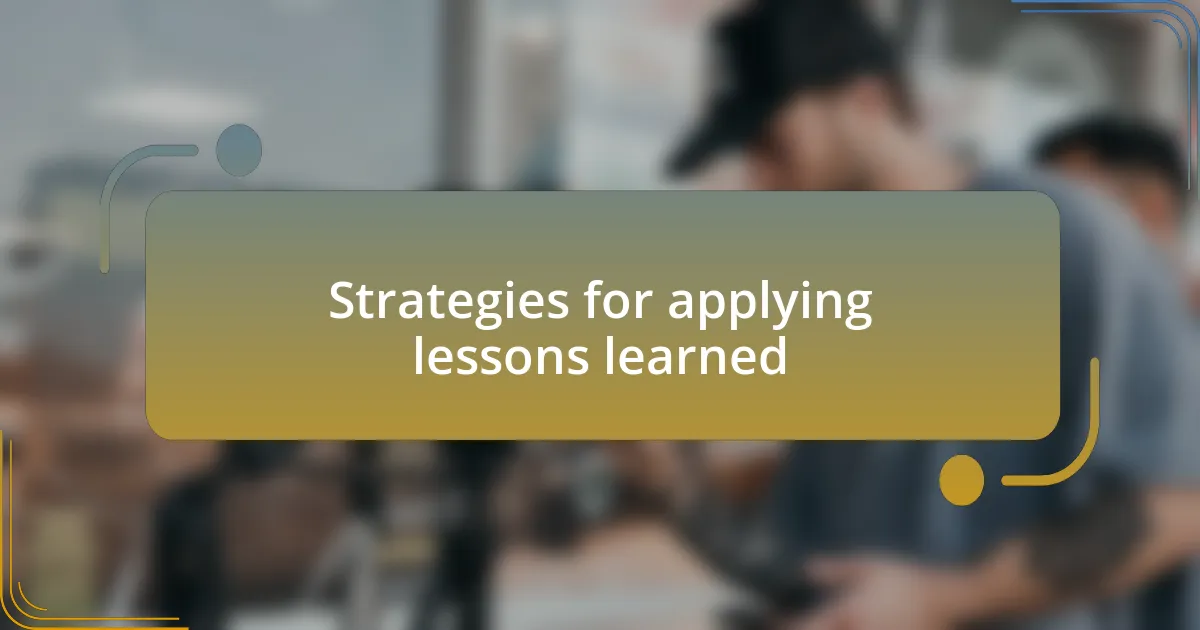Key takeaways:
- Conflicts in film production often stem from creative differences, logistics issues, and budget constraints.
- Brainstorming sessions and role reversal techniques can effectively resolve conflicts and promote collaboration.
- Active listening and setting clear boundaries are crucial for preventing misunderstandings and building trust within the team.
- Reflecting on conflict resolution experiences helps reinforce successful strategies and improves future collaboration.

Common conflicts in film production
In film production, conflicts often arise from creative differences among team members. I remember a specific instance on a short film project where the director and the cinematographer clashed over the visual style. It left the crew in a tense atmosphere, raising the question: how can we balance artistic vision with collaboration?
Logistics can also lead to disagreements, especially regarding scheduling and resource management. During one of my projects, we faced a significant delay because of weather issues, which put everyone on edge. I learned that clear communication and adaptability are crucial in these situations; it’s essential to keep the team informed and focused on finding solutions together.
Budget constraints frequently create friction within the production team as well. I once encountered a scenario where the producer had to make tough choices about casting after realizing we were overspending in other areas. It was a stressful moment, but it prompted discussions about prioritization and the importance of transparency in budgeting to prevent misunderstandings.

Techniques for resolving conflicts creatively
When it comes to resolving conflicts creatively, I often find that brainstorming sessions can work wonders. I recall a heated discussion during pre-production when our writer and director approached a pivotal scene differently. Instead of arguing, we gathered everyone for an open session where everyone shared their interpretations. The vibrant dialogue not only sparked innovative ideas but also fostered a sense of unity in our shared vision.
Another technique I value is role reversal. Once, during a disagreement on casting choices, I suggested that we each take on the perspective of the other team members involved. It was eye-opening! As we discussed the choices from each other’s viewpoints, we realized the emotional stakes involved. This exercise didn’t just dissolve the tension; it shifted our entire approach to collaboration, reminding us that empathy can lead to more dynamic solutions.
Additionally, I’ve found that using visual aids like mood boards can be particularly helpful in bridging creative differences. Visual representations of ideas can clarify intentions and reduce misunderstandings. I once proposed creating a visual comparison between two design concepts that had caused friction. That simple step encouraged a constructive debate, allowing us to pinpoint elements we collectively loved while letting go of areas that didn’t serve our project. Who knew that art could pave the way for harmony?

Personal experiences in conflict resolution
I remember a particularly tense moment on set when two crew members clashed over the scheduling of shooting days. Instead of letting it fester, I organized a casual coffee break where we could talk things through in a relaxed environment. It surprised me how much the atmosphere changed; by simply humanizing the conflict, we could address the issue directly, and it transformed what could’ve been a major setback into a collaborative solution.
Once, during a roundtable discussion, I experienced the power of active listening firsthand. A producer and I had opposing views on a creative direction, and instead of interrupting each other, we took turns voicing our concerns. It was insightful to hear their perspective fully, which allowed me to reconsider my own stance. This practice of truly listening not only resolved our conflict but also built a stronger foundation of trust for future projects. Isn’t it interesting how sometimes, just taking the time to truly understand someone else can lead to the best solutions?
I also believe in the significance of setting clear boundaries to prevent conflicts before they escalate. Early in my career, I faced a situation where unclear expectations led to misunderstandings. By implementing a straightforward communication protocol with my team, I noticed that our workflow improved dramatically. This proactive approach not only minimized conflicts but also promoted a culture of respect. How often do we overlook the basics that can make such a difference?

Strategies for applying lessons learned
When it comes to applying lessons learned, I find that reflection is key. After navigating conflicts, I take a moment to jot down what worked and what didn’t. This simple practice not only helps me avoid repeating mistakes but also reinforces those strategies that cultivated success. Reflecting in this manner serves as a powerful reminder of how effective I can be when I approach conflict with the right mindset.
I remember a time when we faced a creative disagreement that went beyond just personal preferences—it struck at the heart of our project’s vision. Instead of simply moving past it, I decided to hold a follow-up meeting where we could revisit our original goals. This allowed us to realign our efforts, and the project not only benefited from the clarity but also from the renewed team spirit that came with that shared understanding. Have you ever paused to recalibrate during a tough discussion? It’s fascinating how this can transform setbacks into stepping stones.
Lastly, I advocate for role-playing scenarios as a technique for applying conflict resolution strategies. Practicing difficult conversations in a safe space not only builds confidence but allows team members to explore alternative perspectives. I once facilitated a workshop where we role-played various conflict scenarios, and it was eye-opening to see how my colleagues approached resolution differently than I would have. This not only broadened my understanding but fostered a collaborative approach moving forward. Isn’t it amazing how stepping into someone else’s shoes—if only for a moment—can lead to innovative solutions?